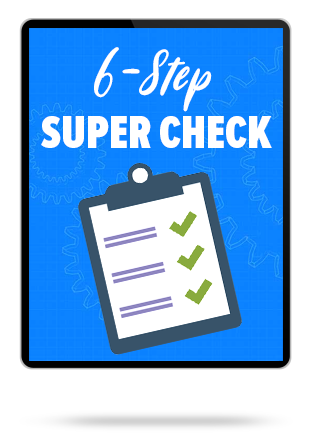What is the taxable component in superannuation?
There are two main tax components that make up a superannuation balance. These components are the Taxable Component and the Tax-Free Component (sometimes referred to as the Exempt Component).
The Taxable Component is further sub-categorised into the Taxable (taxed) Component and the Taxable (untaxed) Component.
The relevance of the Tax-Free Component, Taxable (taxed) Component and Taxable (untaxed) Component is that each of these components are treated differently for tax purposes when withdrawn from the superannuation accumulation or pension environments, including when a superannuation death benefit payment is made.
Taxation of the Tax-Free Components is simple; it will always exit a superannuation account tax free, regardless of whether it is withdrawn as a lump sum, paid as a pension payment from an income stream, or paid to a beneficiary or estate as a death benefit payment.
What is the Taxable Component?
The Taxable Component within a superannuation accumulation account essentially consists of:
– All contributions made to the account where a tax deduction was claimed by the contributor (i.e. SG Contributions, Salary Sacrifice, Self Employed); plus
– All earnings within the account (positive and negative); plus
– Most insurance proceeds within the account; plus
– All other additions to the account from a previously untaxed source
The first two items noted above, contributions and earnings, make up the Taxable (taxed) Component and the final two, insurance proceeds and additions from an untaxed source, make up the Taxable (untaxed) Component.
The actual legislative calculation of the Taxable Component within an accumulation account is that you first add-up all of the Non-Concessional (after-tax) Contributions that have been made to the account. these contributions make up the Tax-Free Component. From this amount, you then deduct any proportionate withdrawals that have been made from the tax-free component and whatever is remaining is the Taxable component.
Related Posts:
Each withdrawal from a superannuation accumulation account must be made proportionately from the Tax-Free and Taxable Components.
The Taxable Component of a pension income stream is a little different, because upon commencement of an income stream, all components are crystallised as a proportion of the purchase price of the pension. For example if a pension income stream was started with $1 Million from an accumulation account – made up of $400,000 Tax-Free and $600,000 Taxable Component, the pension will forever remain a 40% Tax-Free 60% Taxable pension, with all earnings within the account allocated proportionately and all withdrawals made proportionately.
Note: Thresholds are based on the financial year that this article is dated. As most of these thresholds are indexed, they may be different if you are viewing this article in a future year.
Tax on Taxable (Taxed) Component
The Taxable (taxed) Component of a superannuation benefit is taxed as follows when withdrawn as a lump sum or pension income stream payment:
| lump sum | ||
|---|---|---|
| Age | Taxable (taxed) Component of Withdrawal | Tax Rate (max) |
| 60 and over | Total Amount | 0% |
| Preservation Age to Age 59 | First $215 000 (lifetime amount – indexed) | 0% |
| Preservation Age to Age 59 | Balance Over $215 000 (lifetime-indexed) | 15% |
| Below Preservation Age | Total Amount | 20% |
| Pension | ||
|---|---|---|
| Age | Taxable (taxed) Component of Withdrawal | Tax Rate (max) |
| 60 and over | Total Amount | Not Subject to Tax |
| Preservation Age to Age 59 | Total Amount | MTR minus a 15% tax offset |
| Below Preservation Age | Total Amount | MTR – no tax offset |
Tax on Taxable (Untaxed) Component
The Taxable (untaxed) Component of a superannuation benefit is taxed as follows when withdrawn as a lump sum or pension income stream payment:
| lump sum | ||
|---|---|---|
| Age | Taxable (untaxed) Component of Withdrawal | Tax Rate (max) |
| 60 and over | First $1.565M (lifetime amount – indexed) | 15% |
| 60 and over | Balance over $1.565M | 45% |
| Preservation Age to Age 59 | First $215 000 (lifetime amount – indexed) | 15% |
| Preservation Age to Age 59 | $215 000 – $1.565M (lifetime – indexed) | 30% |
| Preservation Age to Age 59 | Balance over $1.565M (lifetime-indexed) | 45% |
| Below Preservation Age | First $1.565M (lifetime – indexed) | 30% |
| Below Preservation Age | Balance over $1.565M (lifetime – indexed) | 45% |
| Pension | ||
|---|---|---|
| Age | Taxable (untaxed) Component of Withdrawal | Tax Rate (max) |
| 60 and over | Total Amount | MTR – minus a 10% tax offset |
| Preservation Age to Age 59 | Total Amount | MTR – no tax offset |
| Below Preservation Age | Total Amount | MTR – no tax offset |
Tax on Taxable Component Death Benefit Paid to Dependent
The Taxable Component of a superannuation benefit is taxed as follows when paid as a death benefit to a Dependent. A Dependent for tax purposes includes a spouse (including former spouse, de-facto or same-sex), a child under age 18, a financial dependant or a person in an interdependency relationship with the deceased.
| Age of Deceased | Type Of Benefit | Age of Beneficiary | Tax on Taxable Component |
|---|---|---|---|
| Any age | Lump sum | Any age | Not subject to tax |
| Age 60 and above | Income stream | Age 60 and above | (taxed) component: not subject to tax; (untaxed) component: MTR minus 10% tax offset |
| Under age 60 | Income stream | Age 60 and above | (taxed) component: not subject to tax; (untaxed) component: MTR minus 10% tax offset |
| Under age 60 | Income stream | Under age 60 | Taxed component: MTR less 15% tax offset; (untaxed) component: MTR |
Tax on Taxable Component Death Benefit Paid to Non-Dependent
The Taxable Component of a superannuation benefit is taxed as follows when paid as a death benefit to a Non-Dependant. A Non-Dependant for tax purposes includes anyone who is not a Dependant for tax purposes.
| Age of Deceased | Type Of Benefit | Age of Beneficiary | Tax on Taxable Component |
|---|---|---|---|
| Any age | Lump sum | Any age | (taxed) component: 15%; (untaxed) component: 30% |
| Any age | Income stream | Any age | Not permitted post 1 July 2007. Pre-July 2007 death benefit income streams taxed the same as if paid to a dependant |
Medicare Levy also applies to all tax rates above that exceed 0%.



